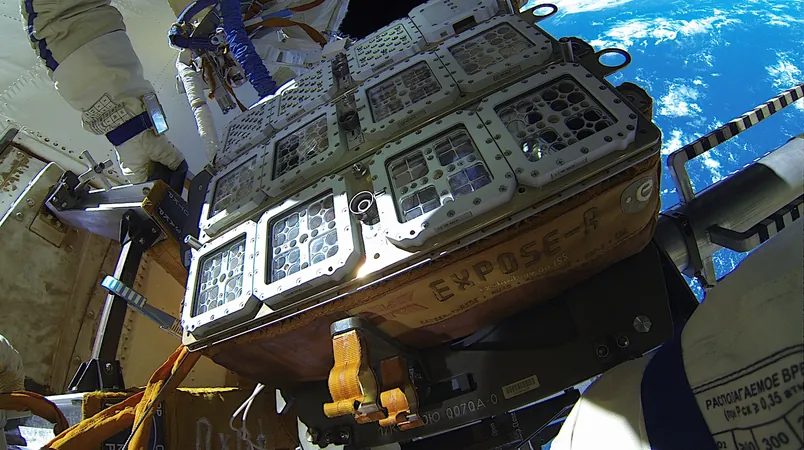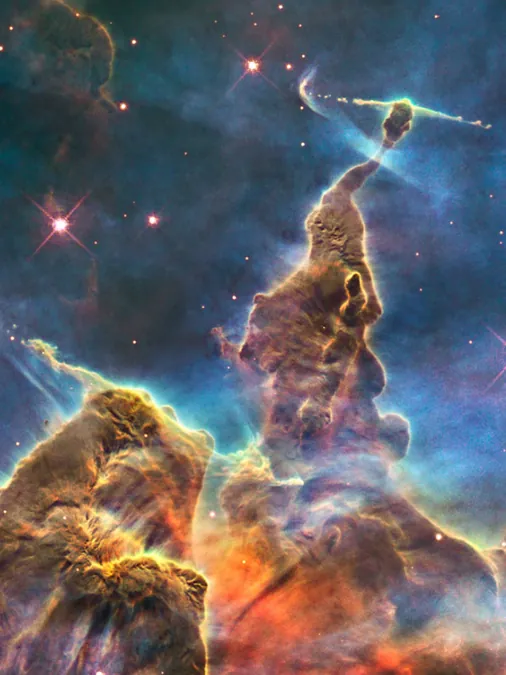
Breakthrough ISS Research Reveals Secrets of Martian Soil and Life's Building Blocks!
2025-03-31
Author: Wei
Introduction
The Photochemistry on the Space Station (PSS) experiment, a groundbreaking study under the European Space Agency’s EXPOSE-R2 mission, was conducted aboard the International Space Station (ISS) between 2014 and 2016. This fascinating research explored how montmorillonite clay—a mineral similar to materials found on Mars—protects organic molecules from the harsh conditions of space, particularly harmful ultraviolet (UV) radiation.
Research Objectives
During this innovative experiment, scientists set out to understand the interaction between montmorillonite and the amino acid alanine. Specifically, they investigated whether montmorillonite could shield alanine from catastrophic UV degradation and whether it could even catalyze the breakdown of alanine, trapping the resulting byproducts within its layers.
Experimental Setup
To achieve their goals, researchers tested different setups: pure alanine films, alanine films shielded by a layer of montmorillonite, and a unique combination of both creating an organoclay. All samples were subjected to the extreme conditions of space for a period of 15.5 months before being brought back for thorough analysis on Earth. Ground-control experiments were conducted using identical samples under simulated solar light to compare results.
Analytical Techniques
Using advanced Fourier-transform infrared (FTIR) spectroscopy, scientists measured molecular changes in the samples before and after exposure. To delve deeper into the processes that influence the stability of irradiated alanine molecules, an additional investigation employed time-resolved FTIR spectroscopy on another set of ground samples exposed to simulated solar light.
Key Findings
The results were striking: montmorillonite exhibited a dual effect on the stability of alanine. When used as a thin protective layer, it acted as a barrier against UV radiation, significantly slowing degradation. However, when mixed intimately with alanine, this clay actually sped up the photochemical breakdown of the amino acid, promoting various reactions that lead to its decomposition.
Implications for Astrobiology
These findings hold crucial implications for understanding the preservation of amino acids in extraterrestrial environments like Mars. Notably, to effectively shield organic compounds from damaging UV rays, a cover of several millimeters of mineral layers is essential.
Role of Carbon Dioxide
Furthermore, the research explored carbon dioxide (CO2)—a byproduct of alanine breakdown—as a potential marker for detecting organic materials. CO2 can become trapped in the interlayer spaces of montmorillonite, especially in clays that contain smaller ions like sodium. This implies that the interplay between montmorillonite and organic compounds under extraterrestrial conditions is more complex than previously understood.
Conclusion
This pivotal research not only illuminates the preservation potential of amino acids on other planets but also enhances our understanding of astrobiological processes. The implications of these findings extend to the ongoing search for life beyond Earth, laying groundwork for future missions aimed at exploring Martian soils for signs of past extraterrestrial life. Stay tuned for more discoveries that could change our understanding of life's building blocks beyond our planet!

 Brasil (PT)
Brasil (PT)
 Canada (EN)
Canada (EN)
 Chile (ES)
Chile (ES)
 Česko (CS)
Česko (CS)
 대한민국 (KO)
대한민국 (KO)
 España (ES)
España (ES)
 France (FR)
France (FR)
 Hong Kong (EN)
Hong Kong (EN)
 Italia (IT)
Italia (IT)
 日本 (JA)
日本 (JA)
 Magyarország (HU)
Magyarország (HU)
 Norge (NO)
Norge (NO)
 Polska (PL)
Polska (PL)
 Schweiz (DE)
Schweiz (DE)
 Singapore (EN)
Singapore (EN)
 Sverige (SV)
Sverige (SV)
 Suomi (FI)
Suomi (FI)
 Türkiye (TR)
Türkiye (TR)
 الإمارات العربية المتحدة (AR)
الإمارات العربية المتحدة (AR)